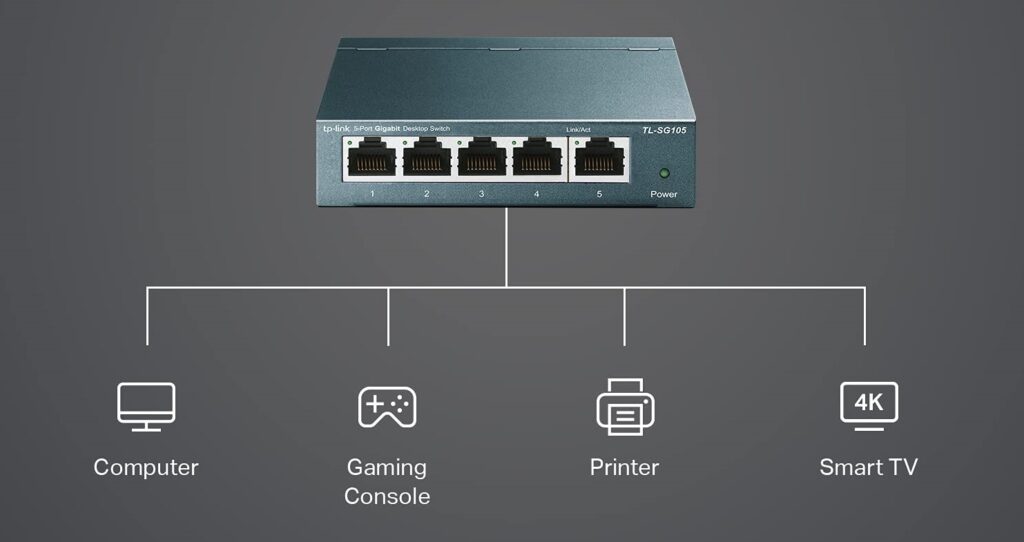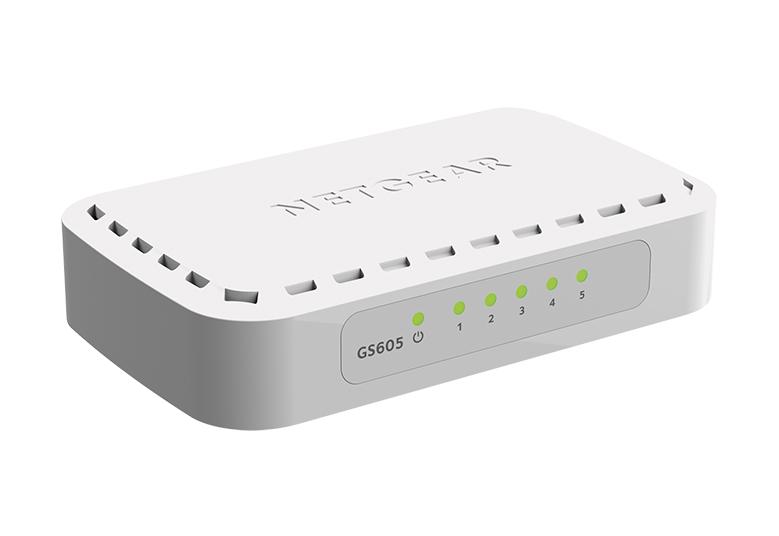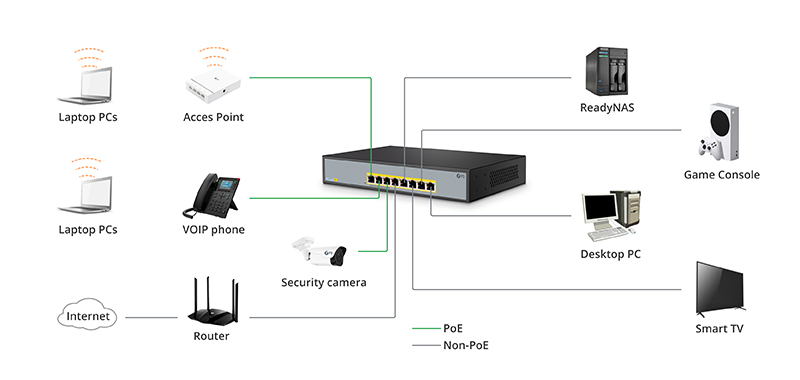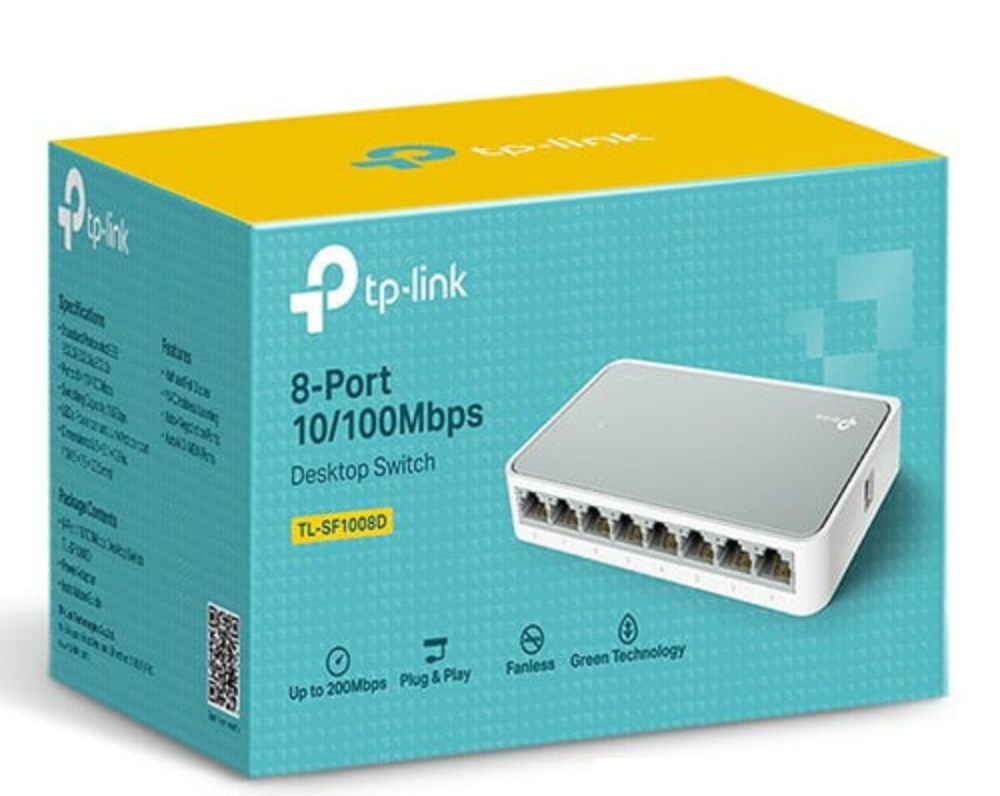A desktop switch, also known as a network switch or Ethernet switch, is a networking device used to connect multiple devices within a local area network (LAN). It plays a crucial role in directing network traffic efficiently, allowing devices to communicate with each other while also improving network performance and reducing network congestion. Here are the key features and applications of desktop switches:
Features and Functions:
- Port Count: Desktop switches come in various port configurations, including 5-port, 8-port, 16-port, and 24-port switches, among others. The number of ports determines how many devices can be connected directly to the switch.
- Data Link Layer: They operate at the data link layer (Layer 2) of the OSI model and use MAC (Media Access Control) addresses to make forwarding decisions.
- Unmanaged vs. Managed Switches:
- Unmanaged Switches: These switches are plug-and-play devices and require little to no configuration. They are suitable for basic networking needs, such as connecting computers and printers in a small office or home network.
- Managed Switches: Managed switches offer advanced features like VLAN support, Quality of Service (QoS) settings, and remote management capabilities. They are used in larger, more complex networks where control and monitoring are required.
- Gigabit Ethernet and Beyond: Many desktop switches support Gigabit Ethernet (10/100/1000 Mbps), which provides high-speed data transfer. In some cases, there are switches that support 10 Gigabit Ethernet for even faster data rates.
- QoS (Quality of Service): QoS features on managed switches allow administrators to prioritize network traffic, ensuring that critical data, such as voice or video, is transmitted with minimal latency and packet loss.
- Power-over-Ethernet (PoE): Some desktop switches are equipped with PoE capabilities, which can provide power to PoE-compatible devices, such as IP phones, cameras, or access points, through the same Ethernet cable used for data transmission.
Applications:
- Small and Home Offices: Desktop switches are commonly used in small businesses and home offices to connect computers, printers, and other devices to the local network. They simplify network setup and provide a central point for wired network connections.
- Home Networks: In home networks, a desktop switch can be used to expand the number of available Ethernet ports on a home router. This is useful when you have more wired devices than the router can accommodate.
- Lab Environments: Desktop switches are often used in educational institutions, testing labs, or research environments to create isolated network segments and test different network configurations.
- Remote Work: With the rise of remote work, desktop switches can be used to expand the number of available network ports for multiple devices in a home office.
- Small Network Segmentation: In small businesses, managed desktop switches can be used to create network segments, segregating traffic and providing security and performance optimization.
- Security Cameras: Desktop switches with PoE capabilities are used to power and connect IP-based security cameras in surveillance systems.
Desktop switches are versatile networking devices that provide a cost-effective and efficient way to expand and manage network connectivity for a variety of environments, from small businesses to homes and remote offices. The choice between managed and unmanaged switches depends on the specific networking needs and complexity of the network.







